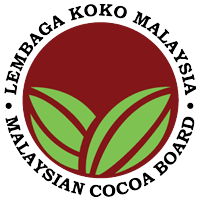About
KokoCorrect Database KokoCorrect Database is a database that stores the records of identification and verification of cocoa plant materials / samples done using KokoCorrect. KokoCorrect is a molecular tool that provides the Malaysian cocoa industry with effective way to carry out identification and verification of accurate cocoa clones at the seedlings, nursery, budwood garden or cocoa field. KokoCorrect uses SNP genotyping technique for identification and verification of true-to-type Malaysian commercial cocoa clones. It works at the DNA level ensuring that clone identification would not be affected with agricultural practices or environmental impacts.
Disclaimer
Whilst every reasonable care has been taken in the preparation of these materials dan contents of this site, the Malaysian Cocoa Board accept no responsibility and shall not be liable for the use of information and the contents of the database or for any reliance placed by any person on any information in them. Users taking decisions on matters covered by this package are advised to refer to the source material because of the 'limitations and accuracy' of the data described below. This package is provided "as is" and without any express or implied warranties, including, without limitation, the implied warranties of merchantability and fitness for a particular purpose.
Limitations and Accuracy of the Data
The data given in this program is as accurate to our sources as possible and we have endeavoured to keep errors introduced in the process of standardisation to a minimum. However, inaccuracies may have been introduced due to errors in original data sources or from our misunderstanding of these sources. The information provided in this database is based on the clone names used in publications. However, there is not always certainty about the names by which clones are known in locations and the user must, therefore, bear in mind that discrepancies between locations in the information on a clone may be caused by environmental and agricultural inputs, not by any remarkable variation within a clone, but may also by different methods clone assessments





